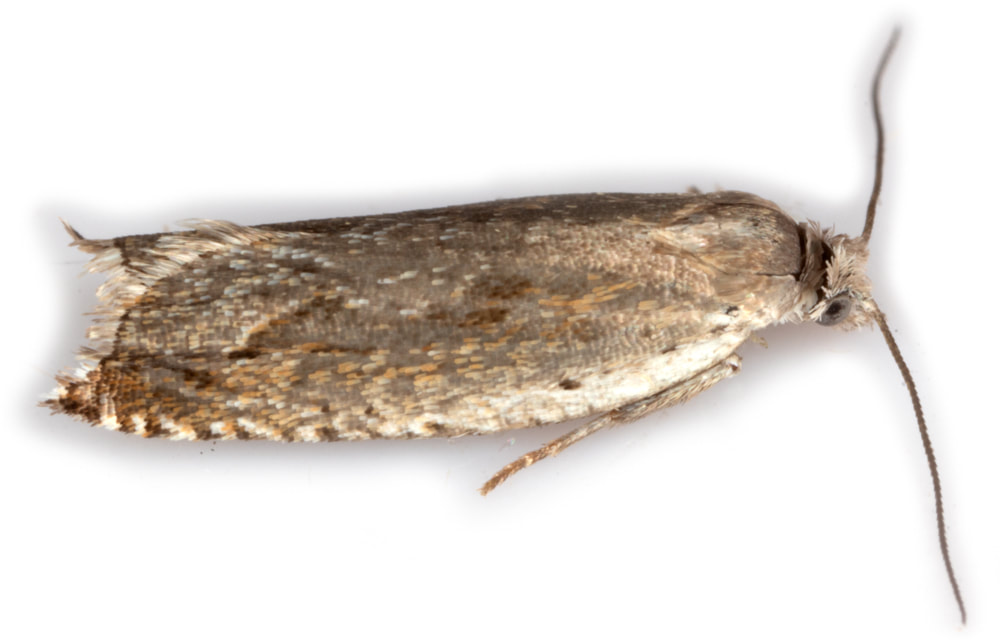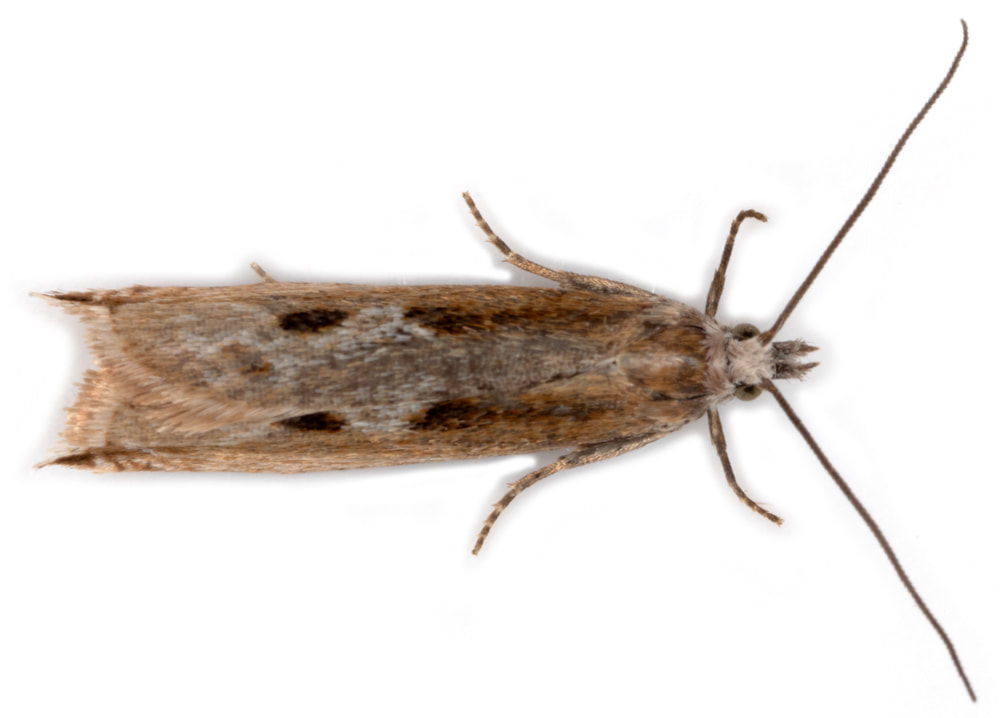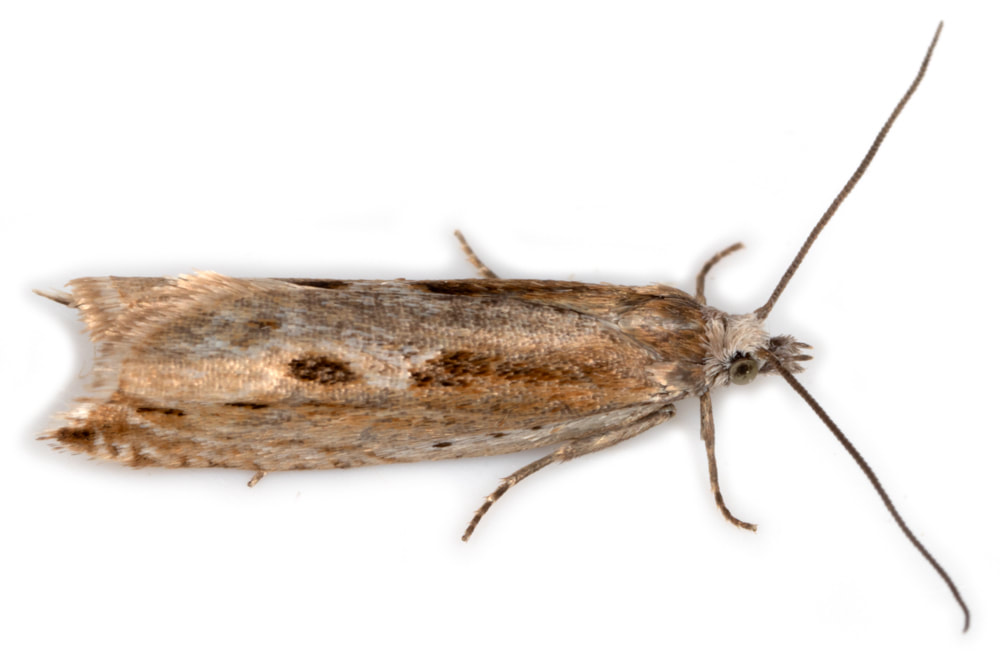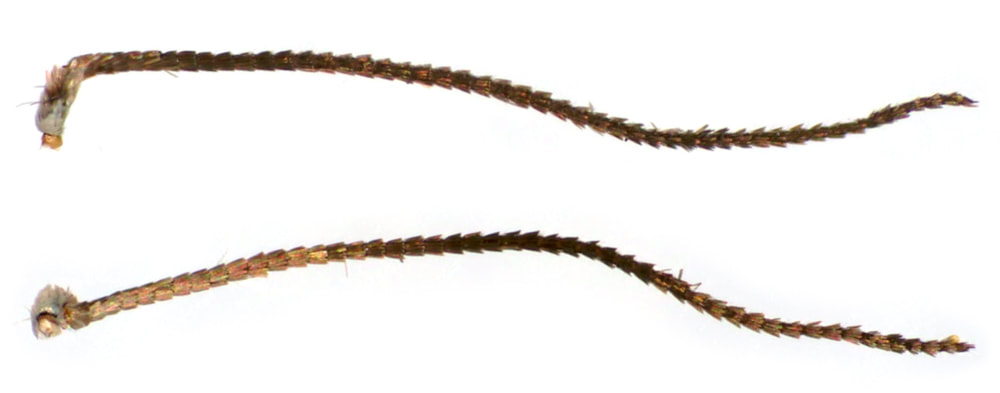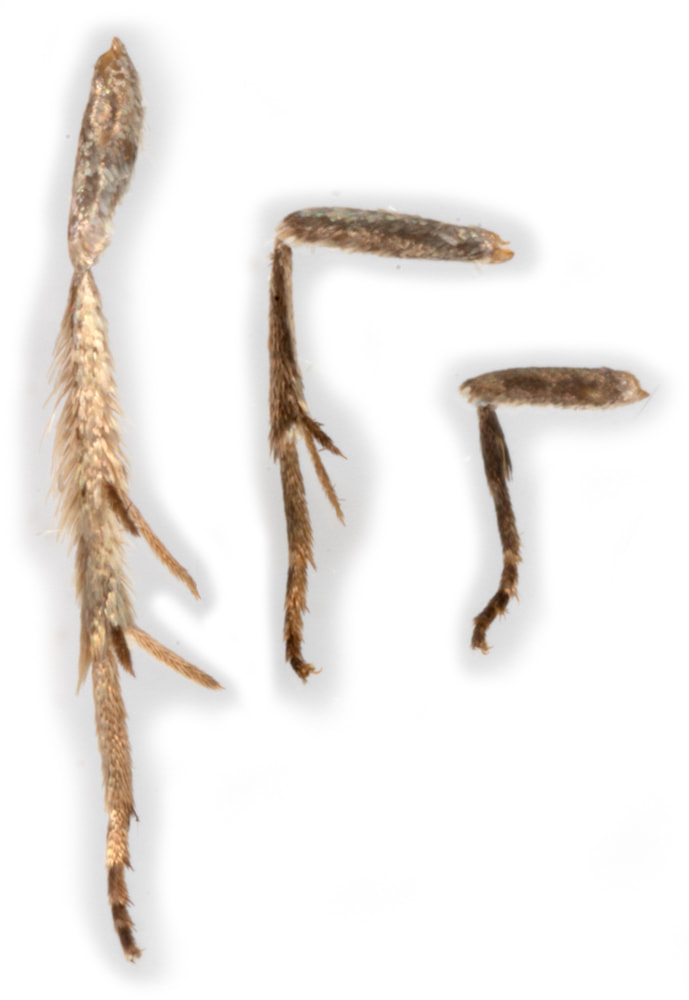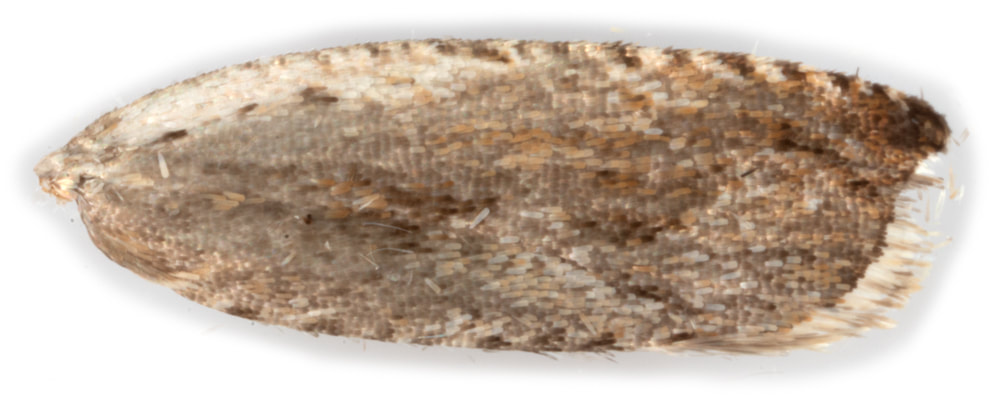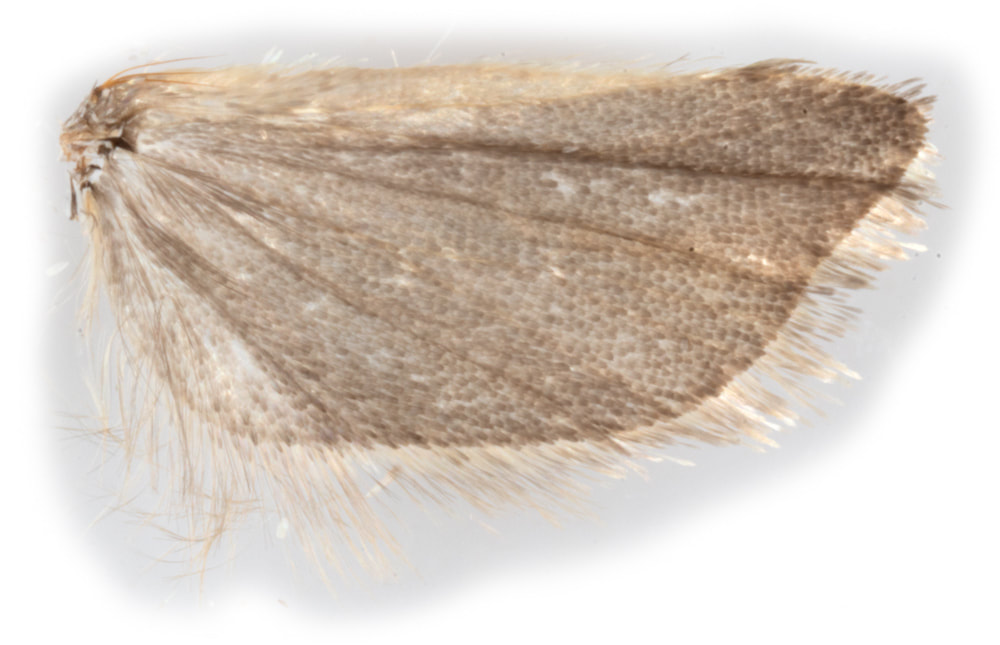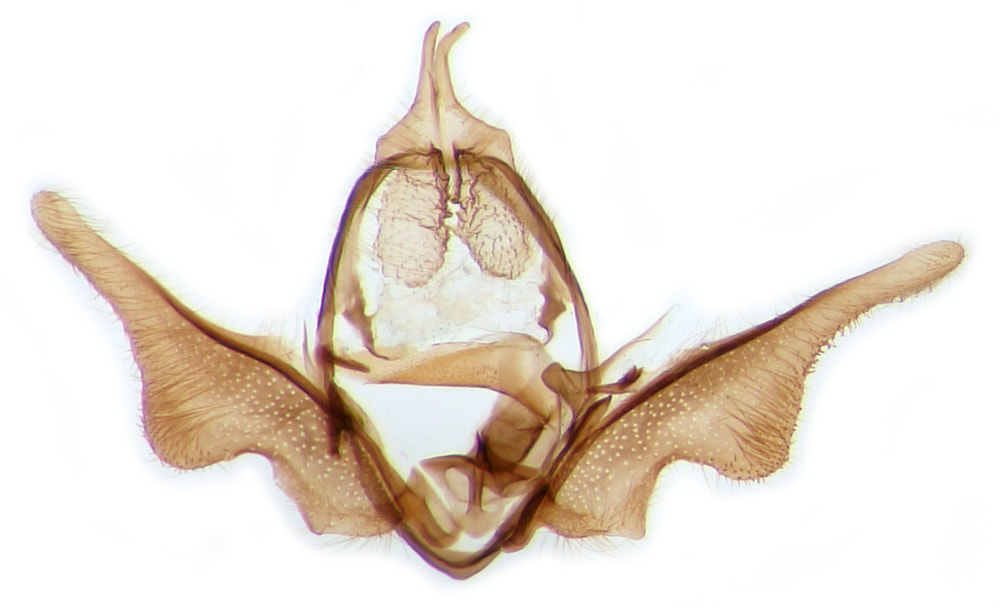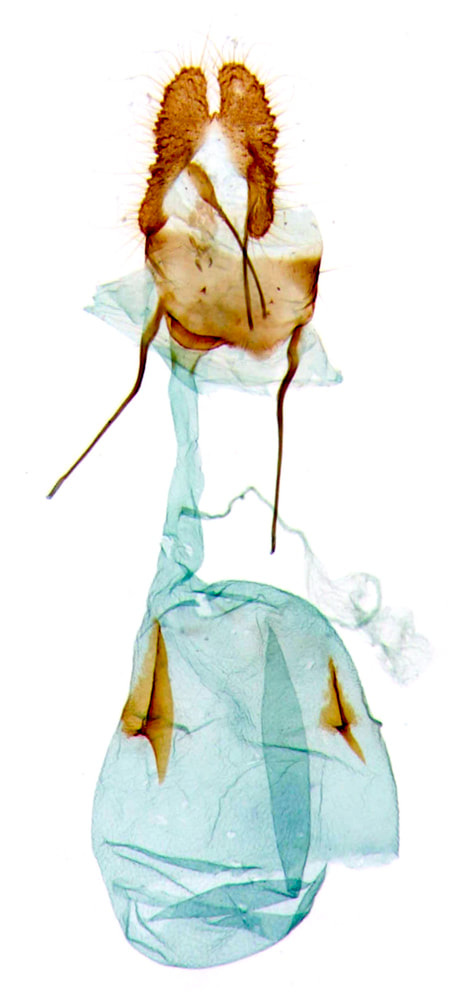49.208 Ancylis subarcuana (Grey Hook-wing)
ws: 11-15mm (BTM), 10-18mm (MBGBI5.2), fw 6-8mm (Sterling & Parsons); May-Aug; creeping willow (Salix repens); NS-A heathland, dry pastures and sand-dunes locally throughout GB
Synonym: A.inornatana (Pierce & Metcalfe); treated as form subarcuana of A.geminana in BTM
Synonym: A.inornatana (Pierce & Metcalfe); treated as form subarcuana of A.geminana in BTM
ID: The three species A.geminana/diminutana/subarcuana are very similar and were formerly considered conspecific (BTM). They are all the same size and all fly May-Aug. A.subarcuana can be distinguished by pale whitish head; pale brown/buff thorax with white midline streak; pale brown ground colour; little contrast between dorsal streak and rest of forewing; white costal base and white distal costal strigulae. See table below.
Male genitalia: Images are shown at Moth Dissection for all three species and drawings are available in MBGBI5.2 and in Pierce and Metcalfe. According to Pierce & Metcalfe there are differences in the shape of the apex of the sacculus with that of A.geminana having an obtuse apex, A.diminutana having an acute apex and A.subarcuana having a 90 degree apex. An image of A.subarcuana at Moth Dissection provides a pointer to the relevant portion of the genitalia.
The sacculo-valvar complex of Ancylis species is fused (as for most Tortricidae) such that it would be impossible to say with certainty what is being referred to as the "apex" of the sacculus. The ventral margin of the sacculo-valvar complex has a somewhat produced basal angulation a bulge at the mid-point, a deep emargination between these two and a tapered apex distal to the mid-point bulge. The "distinctive" feature arrowed in the Moth Dissection image of A.subarcuana suggests that the mid-point bulge is more acute, the basal emargination deeper and the ventral margin between the mid-point and apex less straight when compared with A.geminana. Unfortunately these differences are not entirely consistent with the drawings in MBGBI5.2 in which the mid-point bulge is drawn more acute in A.geminana.
Female genitalia: Images are available at Moth Dissection for A.geminana and A.diminutana but not A.subarcuana. All three are illustrated in MBGBI5.2 (unhelpfully not all on the same page) and in Pierce and Metcalfe. No differences between the species are described by Pierce & Metcalfe. An arrow on the Moth Dissection image of A.diminutana implies a difference in a sclerotisation at the ostium, this having more angular margins in A.geminana.
Male genitalia: Images are shown at Moth Dissection for all three species and drawings are available in MBGBI5.2 and in Pierce and Metcalfe. According to Pierce & Metcalfe there are differences in the shape of the apex of the sacculus with that of A.geminana having an obtuse apex, A.diminutana having an acute apex and A.subarcuana having a 90 degree apex. An image of A.subarcuana at Moth Dissection provides a pointer to the relevant portion of the genitalia.
The sacculo-valvar complex of Ancylis species is fused (as for most Tortricidae) such that it would be impossible to say with certainty what is being referred to as the "apex" of the sacculus. The ventral margin of the sacculo-valvar complex has a somewhat produced basal angulation a bulge at the mid-point, a deep emargination between these two and a tapered apex distal to the mid-point bulge. The "distinctive" feature arrowed in the Moth Dissection image of A.subarcuana suggests that the mid-point bulge is more acute, the basal emargination deeper and the ventral margin between the mid-point and apex less straight when compared with A.geminana. Unfortunately these differences are not entirely consistent with the drawings in MBGBI5.2 in which the mid-point bulge is drawn more acute in A.geminana.
Female genitalia: Images are available at Moth Dissection for A.geminana and A.diminutana but not A.subarcuana. All three are illustrated in MBGBI5.2 (unhelpfully not all on the same page) and in Pierce and Metcalfe. No differences between the species are described by Pierce & Metcalfe. An arrow on the Moth Dissection image of A.diminutana implies a difference in a sclerotisation at the ostium, this having more angular margins in A.geminana.
A.geminana |
A.subarcuana |
A.diminutana |
|
Head |
Brown |
Whitish-buff |
Brown |
Thorax |
Brown |
Pale brown/buff with white midline |
Brown |
Base of costa |
Pale brown |
White |
Pale brown |
Distal costal strigulae |
Pale brown |
White |
Pale brown |
Pale dorsal streak |
Strongly contrasting |
Weakly contrasting |
Strongly contrasting but heavily suffused grey |
Distal portion of costal margin of pale dorsal streak |
Sinuate |
Sinuate (if discernable) |
Straight |
Forewing ground colour |
Red-brown |
Pale brown |
Red-brown |
§1 New Forest, Hampshire; 14/07/2019; female; fw 6.0mm; to light
§2 Loch Rannoch, Perthshire; 16/06/2021; male
All images © Chris Lewis
§2 Loch Rannoch, Perthshire; 16/06/2021; male
All images © Chris Lewis
Page published 24/11/2019 (§1) | §2 added 14/09/2021
